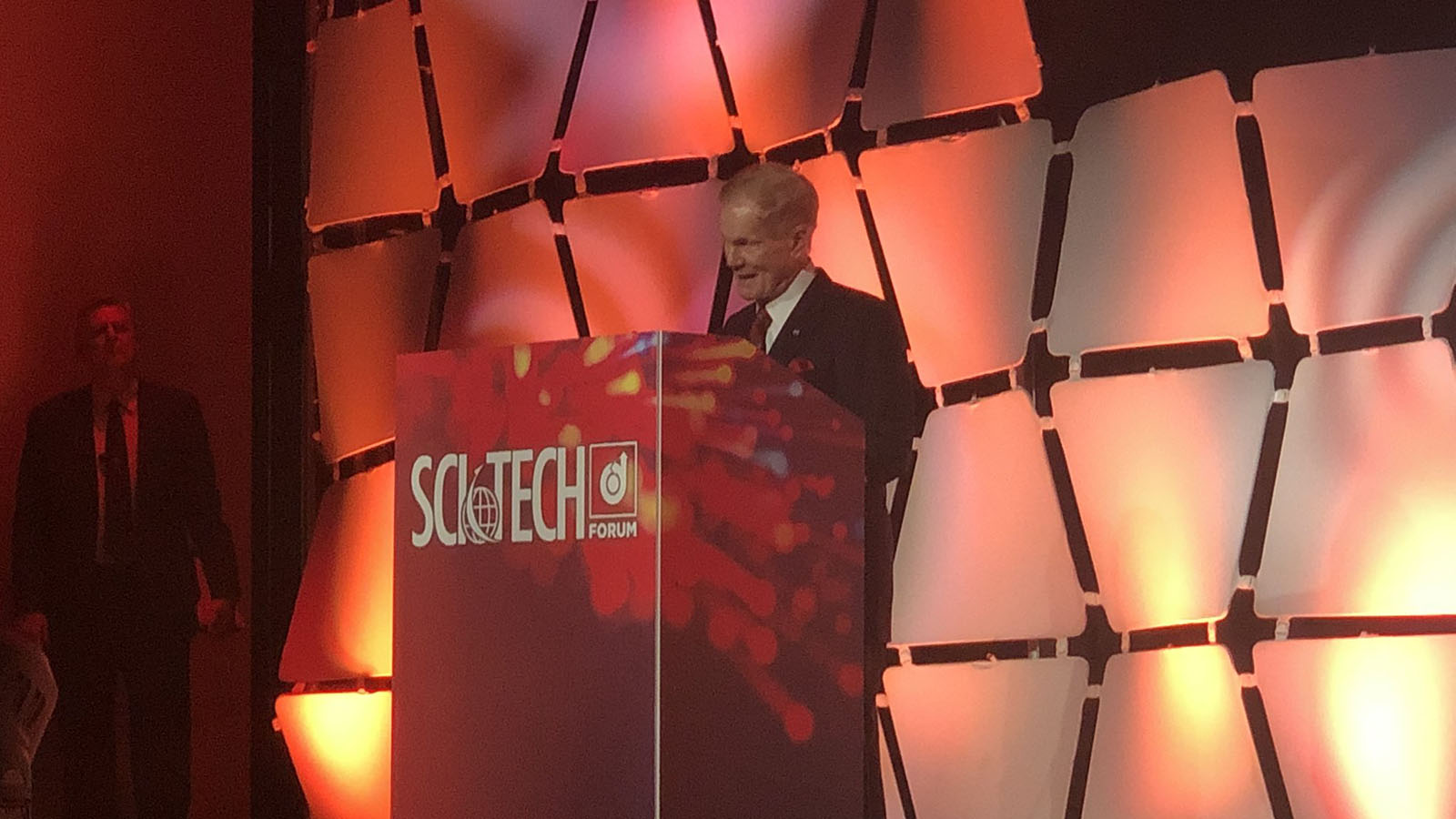NASA, DARPA join forces to create and test nuclear rocket for Mars journey
By Jon Kelvey|January 24, 2023
Interagency agreement formalizes responsibilities
AIAA SCITECH FORUM, National Harbor, Md. — NASA and DARPA will collaborate on a project to develop a nuclear thermal rocket that could one day be launched atop a conventional rocket and be turned on in space to propel astronauts to Mars.
“Our goal is to launch and demonstrate a successful nuclear thermal engine as soon as 2027,” NASA Administrator Bill Nelson told an audience here Tuesday morning. “With the help of this propulsion system, astronauts will be able to journey to and from deep space faster than ever.”
NASA and DARPA have informally cooperated on DARPA’s Demonstration Rocket for Agile Cislunar Operations, or DRACO, program since Phase I began in 2021. But the interagency agreement signed earlier this month means closer cooperation and sharing of resources, according to Tabitha Dodson, DARPA’s DRACO program manager.
“The primary thing that’s changed over is that NASA will be providing a lot more funding,” Dodson told me in an interview after the announcement, but she said it was too early to say what that dollar amount might be.
On the technical side, NASA will lead development of the engine that will propel the DRACO spacecraft. Under the agreement, NASA’s work will be led by Anthony Calomino, who manages the Space Nuclear Technology Portfolio within NASA’s Space Technology Mission Directorate. DARPA will remain the leader of the overall DRACO program, however, and, according to Dodson, retain launch authorization authority — as well as responsibility and liability for any problems or accidents.
Unlike chemical rocket engines, which burn a fuel along with an oxidizer to create thrust, nuclear thermal engines run a nuclear fission reactor to heat a propellant, liquid hydrogen in this case, and expel it to produce thrust. Because nuclear reactors can get very hot, around 2,700 degrees Celsius, and because liquid hydrogen alone is very light, nuclear thermal rocket engines can produce thrust between two and five times more efficiently than chemical rockets.
The high thrust and efficiency of nuclear thermal propulsion could get astronauts to and from Mars faster, thereby avoiding higher doses of dangerous cosmic radiation. But Calomino notes that between the U.S. Space Force, which would like to use a nuclear thermal engine for cislunar missions, and NASA’s own needs to support lunar missions under the Artemis moon program, a nuclear thermal engine will likely fly between Earth and the moon long before heading to Mars.
“I think we’re really looking at that as the proving ground,” he said, so that “we understand what it’s going to be before we really head off to Mars with that system.”
DARPA was originally targeting 2026 for DRACO’s flight demonstration, but Dodson said that contract negotiations for Phase 2 of the program — which will see the actual construction of a reactor and engine — are still ongoing. She would like to see contract awards announced by March.
RELATED READING: Nuclear Rocket Redux — The U.S. has revived its nuclear propulsion research. Can it succeed this time?






